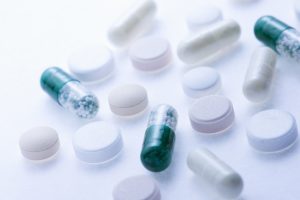Since the discovery of Penicillin in the 1940s, antibiotics have been used to save countless human lives. Today we rely on antibiotics to stave off infection caused by illness and injury. Get an overview of the development and evolution of antibiotics and explore the different types and uses of each of the most common varieties later in this post.
This post will explore the basics of antibiotic use and the dangers of using too frequently or not using enough antibiotics to destroy the infection-causing bacteria. Next, we will look at natural antibiotics and their benefits.
Why You Should Consider Alternatives To Antibiotics
Since the discovery of Penicillin, antibiotics have often been used as a go-to remedy for eliminating infection and reducing the recovery time for everything from urinary tract infections to earaches, toothaches, and more. Unfortunately, antibiotics have led to the gradual evolution of bacterial cells, which have developed the means to resist the attack of the most common antibiotics. Since the 1970s, scientists have been growing concerned that bacterial evolution may be outpacing the development of novel antibiotics capable of overcoming natural bacterial resistance. As a result, people incorporate antibiotic alternatives whenever possible to help aid in rebalancing the scales between antibiotics and the developing antibiotic resistance in the bacteria that antibiotics are intended to combat.
What Is A Natural Antibiotic?
One of the methods that science has turned to slow the progression of antibiotic resistance is the use of natural antibiotic alternatives. Many natural substances possess inherent antimicrobial properties. This type of antibiotic can be used in place of traditional antibiotics to act as an effective treatment for a variety of bacterial infections, allowing us to reserve the use of conventional antibiotics for more severe conditions.
Types Of Natural Antibiotics
Many plants, fruits, oils, vegetables, and herbs have retained a natural ability to combat bacterial infection. These are generally referred to as astringent foods. Astringent foods can attack harmful infection-causing bacteria without harming the body’s beneficial bacteria.
What Are The Best Natural Antibiotics?
The list is extensive; however, several tried and valid options have proven to be effective, are easily accessible, and are well-tolerated by most people.
Honey, garlic, pepper, oregano, cranberry extract, thyme, and clove are all frequently used ones that demonstrate the ability to heal the infection.
Risks Of Natural Antibiotics
While these antibiotics and astringent foods are well-tolerated and thus relatively safe for use as an alternative to traditional antibiotics, You should note some safety caveats.
For example, while honey, oregano oil, and garlic have all been used as effective topical treatments to quicken the healing of wounds and post-surgical sites, there is the potential of introducing new bacteria to the injury if not cleaned properly. Additionally, you must note that essential oils are often highly-concentrated and should not be taken internally.
Whether you are using a traditional or natural antibiotic, it is essential to always consult with a medical professional to ensure that you use the antibiotic most safely and effectively.
When To Use Prescribed Antibiotics
As a general rule of thumb, antibiotics should only be prescribed to treat bacterial infections that are unlikely to be healed by the body’s natural immune system. Recent studies have shown that as much as 30% of prescribed antibiotics are unnecessary. To help combat resistance, medical professionals are turning more frequently to these antibiotics to help aid the body’s natural immune system in resolving infection.

5 Natural Antibiotics To Combat Infections
We have briefly discussed the most common, tried-and-true natural antibiotics. Now, let’s take a closer look at the five most common ones and their uses.
Honey
Honey has been used topically to help prevent infection and speed the healing of wounds and surgical incisions. In addition, honey possesses solid antibacterial properties and natural healing compounds that combat bacteria and help to reduce scarring.
Clove Oil
Clove oil is often used as a natural pain reliever and antibacterial agent to help ease the discomfort of toothaches caused by bacterial infection.
Oregano
Oregano is often mixed with water or vinegar to be used as a topical disinfectant, mixed into boiling water, or a commercial steamer to be inhaled. When breathed in, oregano can help to resolve sinus infections.
Cranberry
Cranberry extract is often used as an effective natural antibiotic treatment for urinary tract infections. Cranberry extract is so effective at treating UTIs that it can often reduce the need for prescribed antibiotics.
Garlic
Garlic contains solid antibacterial compounds that have proven effective as antifungal and antibacterial agents. You can use garlic oil topically to treat fungal infections. In contrast, You can ingest garlic pills or raw garlic to help treat intestinal infections and other disruptions in internal bacterial balance.
When To See A Doctor
You need to get the help of a medical professional when managing an infection that is not resolving or appears to be worsening despite treatment with these antibiotics. A qualified medical professional will be able to advise on the safety and efficacy of these antibiotics and may provide a prescription for traditional antibiotics if needed. Therefore, it is essential always to follow the advice of a healthcare provider when attempting to treat a bacterial infection.
Side Effects And Considerations
They often have fewer or less severe side effects than prescribed antibiotics. They can generally destroy or disrupt the activity of harmful, infection-causing bacteria without disrupting the biological activity of beneficial bacteria.
It is important to remember that they may cause allergic reactions and possible digestive upset in select individuals. Therefore, patients should seek the advice of a medical professional before beginning a course of treatment with these antibiotics to ensure that they are being used most safely and effectively.
Frequently Asked Questions
Most of them have proven to be effective at treating various bacterial infections. Honey, garlic, clove oil, cranberry extract, and oregano are all proven natural antibiotic remedies.
Various plants, vegetables, fruits, and essential oils can be used. Honey, garlic, oregano, cranberry extract, and clove oil are some of the most common, well-tolerated, and potent ones frequently used in treating some of the most common bacterial infections.
Honey, garlic, oregano, clove oil, and cranberry extract have all been used centuries to combat bacterial infection. These “astringent foods” act as potent natural alternatives to prescription antibiotics.
Raw garlic is a potent natural antibiotic. Garlic extract used in an oil or paste can be an effective topical antifungal treatment. In addition, consuming raw garlic in small quantities or taking wild garlic extract supplements can help to combat intestinal and other digestive infections.
Powerful ones are created by nature. However, you can enhance the natural healing properties of these astringent foods by using the appropriate carrier to ensure the optimum effectiveness of the treatment. Carrier oils are often used to aid in the absorption of topical types, while extracts may be made into a capsule form for ease of use.
Several herbs and spices can be used as potent antibiotics. Garlic, thyme, clove, and oregano are all examples of herbs and spices used to combat infection for centuries.
Vitamin E is one of the most effective bodily antibiotics. Vitamin E contains natural anti-oxidant properties which support your immune system by helping to reduce or eliminate free radicals in your system.
Honey has been used as a potent natural antibiotic for centuries. Honey possesses natural solid antibacterial and anti-inflammatory properties that have proven effective at treating a wide variety of bacterial infections and have been shown to speed the healing of wounds and incisions and reduce scarring when used topically. Manuka honey, in particular, has led the most potent antibacterial properties.
Thyme and oregano are two of the most commonly used herbal antibiotics to combat bacterial infection. Thyme is often used with water or vinegar base to form a disinfectant that can help reduce the number of bacteria on surfaces. Oregano is often blended with carrier oils as a potent topical antibacterial agent.
Cranberry extract and cranberry juice are commonly used to help treat bacterial infections and alleviate the symptoms of urinary tract infections or UTIs. Cranberry has proven to be highly effective and may reduce or eliminate the need for prescription antibiotics to treat mild to moderate UTIs.
Antibiotics are made from what is known as secondary metabolites of the various bacteria and funguses that they are created to combat. In addition, various antibiotic drugs are derived from different bacteria and fungal molds.
While turmeric has been shown to display strong anti-inflammatory properties and is commonly used to help reduce fevers, swelling, and other symptoms of inflammation in the body, its potential use as a natural antibiotic has not yet been proven.
There are as many home remedies as there are antibiotics. For example, Manuka Honey is frequently used as a topical antibacterial salve or ingested to help boost the innate immune system to help ward off a variety of infections. In addition, thyme may be distilled in water or vinegar to create a strong topical disinfectant. Finally, you may mix oregano and clove into carrier oils to create potent topical antibiotic treatments.
The best natural antibiotic or antifungal is the one that targets the specific type of bacteria causing the infection. A medical or healthcare professional will be able to advise you on the best antibiotic or antifungal to use based on your unique symptoms. Using the correct antibiotic or antifungal to treat the specific type of bacteria causing the infection is essential.
Scientists have discovered pieces of evidence in the DNA of ancient civilizations, including the Inca. Researchers are using these discoveries to gain insight into the interaction between these antibiotics and bacteria to help guide the continued quest to combat resistance to antibiotics.
While there are several good home remedy options or antibiotics, you must use the right antibiotic to combat the specific type of bacteria causing the infection. Always consult a healthcare provider to determine the condition’s root cause and the best treatment options for you.
https://www.healthline.com/health/natural-antibiotics
https://www.ncbi.nlm.nih.gov/pmc/articles/PMC4103721/
https://www.mindbodygreen.com/articles/best-natural-antibiotics
https://www.dogsnaturallymagazine.com/three-natural-antibiotics-for-your-dog/
https://study.com/academy/lesson/what-is-a-natural-antibiotic-foods-plants.html
https://health.mo.gov/safety/antibioticresistance/generalinfo.php
https://www.webmd.com/vitamins/ai/ingredientmono-662/turmeric
https://pubmed.ncbi.nlm.nih.gov/33734062/
https://healthfully.com/vitamins-that-work-as-natural-antibiotic-6279442.html
https://www.ncbi.nlm.nih.gov/pmc/articles/PMC4103721/
https://www.nhs.uk/conditions/antibiotics/side-effects/
https://www.cdc.gov/drugresistance/threat-report-2013/pdf/ar-threats-2013-508.pdf#page=6
https://www.sciencedirect.com/science/article/abs/pii/0306987783900403
https://dailytargum.com/article/2021/02/rutgers-study-finds-antibiotic-overuse-is-caused-by-misconceptions-financial





